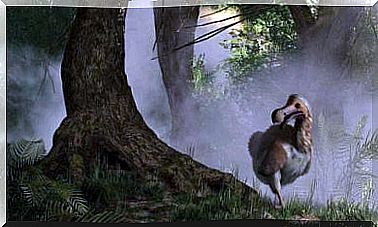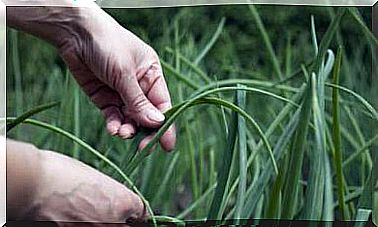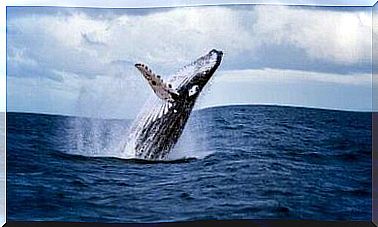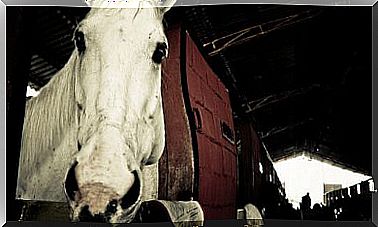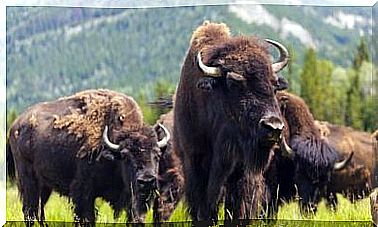Lamarckism: Another Theory Of Evolution
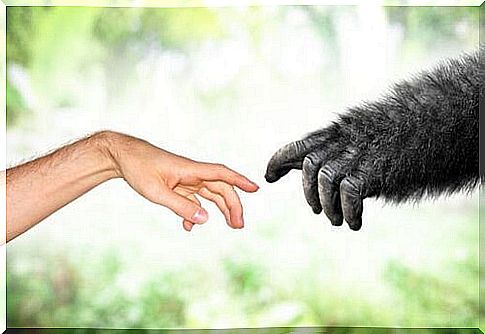
Lamarckism is a theory which states that living things tend to be more complex and to evolve to satisfy a need. It was rejected in the late 19th century, following the emergence of Darwin and Wallace’s theory of natural selection. However, some of his ideas seem to have been vindicated in the light of new scientific discoveries.
What are these findings and why should they support Lamarckism? Are current evolutionary theories concepts that are becoming obsolete? Read on to learn more.
Lamarckism and giraffes stretching their necks
Lamarckism is a theory that, when proposed in the early 19th century, seemed convincing in its simplicity. It is based on an elementary principle: animals tend to become more complex due to a “vital impulse”, which motivates them to develop their characteristics to meet certain needs.
Jean Baptiste de Pocquelin, a knight from Lamarck, explained his theory very graphically with the well-known example of giraffes.
According to this example, giraffes originally had to have a small neck, which allowed them to reach the lower leaves of trees. However, due to competition between them, their food source quickly ran out.
Therefore, the giraffes would have made a special effort to reach the tallest leaves and their necks would have stretched to the length we know today.

Lamarckism, an antiquated theory … in part
However, after the publication of Charles Darwin’s The Origin of Species in 1859, Lamarckist ideas fell into disuse. Darwin stated that the evolutionary changes occurred by natural selection of the most suitable animal, the animals having variable characteristics. Thus, in the example of giraffes, some of them would have longer necks, which would make them better suited to survive.
This, with subsequent modifications, is the basis of contemporary evolutionary theory: the selection of the strongest. In our day, the Darwinian theory of natural selection is widely accepted, but some aspects of Lamarckism are being reconsidered as reliable, based on what some studies have discovered. Read on to learn more.
Does the environment change genes?
We live in a world where it is accepted that genes and their variability are the basis of evolution. Most people, consciously or unconsciously, have been taught that Darwin’s theory is the benchmark on the evolutionary idea of species.
However, sometimes we don’t realize that some of Lamarck’s ideas are perfectly plausible. Not everything in life is determined solely by genes, nor are genes independent of the environment in which we live. There are several ways in which the environment could modify genes, given the chemical nature of the genome.
We will now explore some of the Lamarckist ideas and see which of them might be plausible and which should be discarded. We are always moving in speculative territory, so nothing mentioned is to be taken as totally true or false.
Mutations are random, they have no direction
One of the misconceptions about the Darwinian theory of evolution is that this biological mechanism pursues a specific purpose.
However, this is a Lamarckist idea, as it supports the theory that adaptations in animals have a meaning: giraffes lengthen their necks, eagles develop sight, dogs improve their sense of smell, and so on. Darwin, however, dismissed this fact and simply speculated that those who naturally adapted better would thrive.
The Luria and Delbruck experiment of 1943 illustrates this very well. According to Lamarck, evolution is directional, that is, it will pursue some beneficial adaptations.
However, Luria and Delbruck showed that bacteria adapted to bacteriophage viruses quite randomly, not trying to adapt. Mutations are the result of chance, not a predisposition in the organism to generate mutations in a specific direction.
Change of genes in hostile environments
However, this option seems entirely plausible. According to some studies, Arabidopsis plants stimulate the recombination of their genes in response to attacks by parasitic fungi. This mechanism improves genetic variability, which can result in an advantage for plants.
Although a similar mechanism has not been proven in animals, we can see how some conditions can affect genes. And not only that, it would also show that it is the living things themselves who can influence their DNA depending on the conditions.

Not everything in life is genetic
Although Darwinian theory and its contemporary modifications are considered correct, we must avoid thinking that it all boils down to simply chromosomes.
It is clear that the chemical nature of the genetic material makes it in constant relationship with the surrounding environment, and therefore capable of being modified according to the prevailing conditions. These theories may shock us, but they have some plausible components in their postulates.
